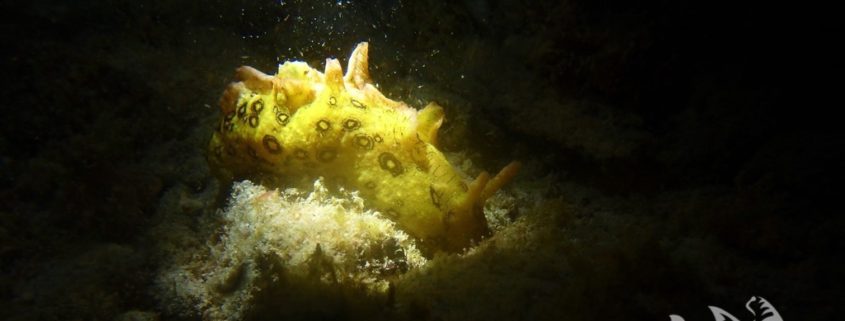Spotted, the spotted sea hare.
During a night dive with a student who is doing his night dive specialty course I spotted something I had never seen before: The spotted sea hare.
For me this was the highlight of the dive, even though we also saw a seahorse, a turtle, several Spanish lobsters and other creatures. If the choice was mine I would have emptied my tank next to the sea hare, just observing. It was not just the one, there where several of these mollusks.
Since I did not have a camera with me I could not take a picture, and you know what they say: No picture? You haven’t seen it!
When I got home I could not stop talking about these creatures so Rob got curious as well. This is why we did a private night dive hoping we would find the spotted sea hare again. This time we took a camera with us. We were in luck, very quickly I spotted the first spotted sea hare again. Rob started taking pictures and I assisted with my dive light. Looking around I saw more sea hares. Some where mating, others just crawling over the sea bottom trying to find food.
Rob expected the sea hares to be tiny slugs, so he was impressed by the size of these creatures! Does anyone know where the name sea hare comes from? The only thing I can think of are the large tentacles which might be compared to the long ears of hares, but don’t know if that’s correct.
The Reef Creature identification book tells us the following:
The spotted sea hare is light brown to green with irregular spots outlined in black. They are seen occasionally to commonly in Florida, the Bahamas and Caribbean. They prefer grassy flats with scattered rocks and feed on algae. When disturbed they discharge a thick, purple fluid, which is harmless. During the day they hide under corals or in crevices in rocks.
We enjoyed our dive observing the sea hares very much and have some beautiful pictures to show them to others. Are you going to do a night dive on Curaçao? Keep an extra eye out for the spotted sea hare!






Leave a Reply
Want to join the discussion?Feel free to contribute!